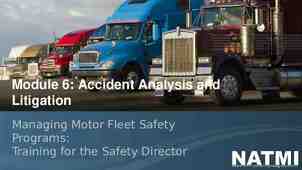Russian Revolution
31 Slides162.00 KB
Russian Revolution
Czars Resist Change Autocracy- czar had total power – Anyone who questioned the absolute authority of the czar, worshipped outside the Russian Orthodox Church, or spoke a language other than Russian were considered dangerous
Alexander III Alexander III used harsh measures to wipe out revolutionaries – Strict censorship on published materials and written documents, including private letters – Secret police carefully watch both secondary schools and universities – Political prisoners were sent to Siberia
Uniform Russian Culture Czar Alexander III oppressed other national groups within Russia – Made Russian the official language and forbade the use of other languages – Targeted Jews Pogroms- organized violence against the Jews
Russia Industrializes In the mid-1800s, Russia lagged behind the rest of Europe in industrialization Czar Nicholas II and his advisors launched a program to move Russia forward – To raise money for new industries, they sought foreign investors and raised taxes – By 1900, Russia had become the world’s fourth-ranking producer of steel
Trans-Siberian Railway Began construction in 1891 and finished in 1916 World’s longest continuous rail line Connected western Russia to eastern Russia
Revolutionary Movements Along with industrialization came the same negative effects as in Britain (child labor, long working hours, low pay, etc.) and people were unhappy Marxist revolutionaries – Followed the views of Karl Marx – Believed that the industrial class of workers would overthrow the czars – Proletariat (workers) would rule the country
Marxists Split Mensheviks – More moderate group who wanted a broad base of support for the revolution Bolsheviks – Led by Vladimir Lenin – More radical group who was willing to sacrifice everything for the revolution
Russo-Japanese War Russia and Japan both competed for control of Korea and Manchuria The two nations signed a series of agreements over the territories, but Russia broke them Japan retaliated and attacked the Russians at Port Arthur, Manchuria in February 1904 Sparked unrest and led to a revolt at home
Bloody Sunday January 22, 1905, about 200,000 workers and their families approached the czar’s Winter Palace in St. Petersburg Carried a petition for better working conditions, more personal freedom, and an elected national legislature Nicholas II ordered his guards to fire on the crowd More than 1,000 wounded and several hundred killed
Bloody Sunday, cont. Caused a wave of strikes and revolts across the country Nicholas II created a legislature Duma- Russia’s first Parliament – Leaders wanted to create a constitutional monarchy – Nicholas did not want to share power, so the Duma dissolved in about 10 weeks
WWI: The Final Blow Nicholas entered WWI and Russia was unprepared to handle the military and economic costs Weak generals and poorly equipped troops were no match for the German army In less than a year, more than 4 million Russians had been killed, wounded, or taken prisoner
WWI Nicholas moved headquarters to war front – Wife Czarina Alexandra ran government while he was away She ignored chief advisors Fell under influence of Rasputin- “holy man” She allowed Rasputin to make political decisions – Opposed reforms & obtained powerful positions for friends Group of nobles murdered him- they feared his increasing role in government
WWI cont. War front- Russian soldiers mutinied, deserted, or ignored orders Home front- Food & supplies dwindling, prices inflated All classes wanted change
The March Revolution March 1917- women textile workers in Petrograd led citywide strike – Nearly 200,000 workers swarmed streets – Soldiers sided with rioters
Czar Steps Down Nicholas II abdicated his throne – One year later, revolutionaries executed Nicholas and his family – Revolution brought down czar, but failed to set up a strong government
Provisional Government Temporary government set up by Duma Decided to stay in WWI conditions in Russia worsened
The Bolshevik Revolution Bolsheviks starting to take control of many cities- “Peace, Land and Bread” Provisional government topples – Armed factory workers attacked Winter Palace – Bolshevik Red Guards took over government offices & arrested leaders of provisional government
Bolsheviks in Power Lenin ordered all farmland be distributed to peasants Gave control of factories to workers Truce with Germany to stop all fighting first Bolshevik national flag
Civil War Rages in Russia 1918-1920 Red Army (Bolsheviks) v. White Army – Red Army commanded by Leon Trotsky – White Army (made up of three main groups of people) Either wanted czarist rule, wanted democratic government, or they were socialists who opposed Lenin’s style of socialism Only thing that united them was the desire to defeat the Bolsheviks
Civil War cont. Several western nations sent military aid forces to help White Army didn’t help 14 million Russians died from fighting, hunger, or worldwide flu epidemic Bolshevik Red Army crushed all opposition
Comparing World Revolutions Russian Revolution much like French Revolution – FR & RR attempted to destroy existing social & political structures – Revolutionaries in Russia & France used violence and terror to control people
Economy in Shambles Economy- trade at a standstill, industrial production dropped, skilled workers fled to other countries
Lenin Restores Order Goal revive economy & restructure government Revitalization of the economy – New Economic Policy (NEP) – Small-scale capitalism (got away from statecontrolled economy) Peasants sold surplus crops for profit Some small factories, businesses, & farms privately owned
Lenin Restores Order cont. Restructuring the government – Union of Soviet Socialist Republics (USSR) Reorganized Russia into several self-governing republics – Communist Party Name came from writings of Karl Marx Classless society Held all power dictatorship of Communist Party
Communist Party Lenin suffered stroke competition to lead Communist Party – Leon Trotsky v. Joseph Stalin
Stalin Becomes Dictator Stalin means “Man of Steel” in Russian Former general secretary of party – Put his friends in positions of power within the party – Worked his way up through the ranks 1928- Stalin in total command of Communist Party
Totalitarianism Government that takes total, centralized, state control over every aspect of public & private life
Totalitarian Leaders Appear to provide a sense of security & give a direction for the future
Totalitarianism- How It's Done Widespread use of communication in the 20 th century made it possible to reach into all aspects of citizens' lives Leader often has secret police to crush opposition & create a sense of fear among the people
Totalitarianism- Who It Affects No one is exempt from suspicion or accusations that he/she is an enemy of the state




































